#developer of python
Explore tagged Tumblr posts
Text
In the ever-evolving world of web development, the demand for versatile and highly-skilled professionals continues to grow. Full stack developers, who are proficient in both front-end and back-end technologies, are particularly sought after. If you're looking to embark on a fulfilling and well-compensated career in web development, becoming a Python full stack developer is an excellent choice. In this comprehensive guide, we'll explore the key skills, tools, and career prospects that come with this exciting role.
Chapter 1: Understanding the Role
What is a Python Full Stack Developer?
A Python full stack developer is a professional with expertise in both front-end and back-end web development using Python. They possess the ability to work with databases, server-side logic, user interfaces, and everything in between. This comprehensive skill set allows them to build, maintain, and enhance web applications from start to finish.
The Tech Stack
Python full stack developers typically work with various technologies, such as Python, Django, Flask, JavaScript, HTML, CSS, and front-end frameworks like React or Angular. They are responsible for creating the visual elements of a website, connecting them with the server, and ensuring seamless user experiences.
Chapter 2: Essential Skills
Proficiency in Python
As the name suggests, Python full stack developers must have a strong command of the Python programming language. They use Python for building back-end services, managing databases, and more. A deep understanding of Python's syntax and libraries is crucial.
Front-End Development
A Python full stack developer should be proficient in front-end technologies like HTML, CSS, and JavaScript. This includes creating responsive, visually appealing user interfaces and ensuring a seamless user experience.
Back-End Development
Back-end development involves server-side logic, databases, and the overall functionality of a web application. Python full stack developers should be skilled in back-end frameworks like Django or Flask, and they need to have a good grasp of databases such as PostgreSQL, MySQL, or NoSQL solutions.
Version Control
Version control systems like Git are essential tools for any developer. Python full stack developers need to be comfortable with Git to track changes, collaborate with other team members, and manage their code efficiently.
Problem-Solving and Debugging
A Python full stack developer should be a capable problem solver with strong debugging skills. Identifying and fixing issues in both front-end and back-end code is a critical part of the job.
Chapter 3: The Front-End Aspect
User Interface (UI) Design
Creating visually appealing user interfaces that are easy to navigate is a vital skill for front-end developers. Knowledge of design principles, responsive design, and user experience (UX) is crucial.
HTML, CSS, and JavaScript
Front-end developers need to be experts in these core technologies. HTML structures the content, CSS styles it, and JavaScript provides interactivity and dynamic behavior to web pages.
Front-End Frameworks
Many Python full stack developers work with front-end frameworks like React, Angular, or Vue.js. These frameworks simplify the development of complex web applications and enhance user experiences.
Browser Developer Tools
Proficiency in using browser developer tools is essential for debugging and optimizing web pages. Developers should be familiar with tools like the Chrome DevTools to inspect and modify web pages.
Chapter 4: The Back-End Aspect
Server-Side Logic
Back-end development involves creating server-side logic, handling data, and ensuring that the application's functionality works as intended. Python full stack developers often work with frameworks like Django or Flask to build the back end.
Databases
Database management is a key component of back-end development. Python full stack developers need to be familiar with various database systems and know how to design, query, and maintain databases effectively.
RESTful APIs
Understanding how to build and consume RESTful APIs is vital for integrating the front-end and back-end parts of an application. Python full stack developers often create APIs to communicate data between the client and the server.
Authentication and Security
Security is a top priority for web applications. Python full stack developers should know how to implement user authentication and authorization, as well as protect the application from common security threats.
Chapter 5: Development Tools
Integrated Development Environments (IDEs)
Python full stack developers often use IDEs like Visual Studio Code, PyCharm, or Sublime Text. These tools provide features like code highlighting, autocompletion, and integrated debugging.
Version Control with Git
Git is a crucial tool for managing code, tracking changes, and collaborating with team members. Git platforms like GitHub and GitLab are commonly used for hosting and sharing repositories.
Package Management
Python package managers like pip and conda are essential for installing and managing libraries and dependencies. Understanding how to use these tools is vital for efficient development.
Virtual Environments
Virtual environments, created using tools like virtualenv or conda, are used to isolate project-specific dependencies and avoid conflicts between different projects.
Chapter 6: Career Opportunities
High Demand
Python full stack developers are in high demand, and the demand is expected to continue growing. Companies of all sizes, from startups to tech giants, are actively seeking professionals with the skills to build and maintain full-fledged web applications.
Competitive Salaries
With their versatile skill set, Python full stack developers often enjoy competitive salaries. The compensation varies depending on factors such as experience, location, and the complexity of the projects they work on.
Freelancing and Remote Work
Many Python full stack developers have the flexibility to work as freelancers or in remote positions. This allows for a work-life balance that suits their preferences.
Career Growth
The role of a Python full stack developer provides ample opportunities for career growth. They can specialize in areas like DevOps, data science, or cloud computing, or move into roles like team lead or project manager.
Chapter 7: How to Become a Python Full Stack Developer
Learn the Basics
Start by mastering the fundamentals of HTML, CSS, JavaScript, and Python. There are numerous online courses, tutorials, and books available to help you get started.
Choose a Framework
Select a back-end framework, such as Django or Flask, and a front-end framework like React or Angular. Familiarize yourself with these frameworks to gain practical experience.
Build Projects
Practical experience is invaluable. Build personal projects or contribute to open-source projects to apply your knowledge and build a portfolio.
Stay Updated
The tech industry is constantly evolving. Keep yourself updated with the latest trends and technologies in web development by reading blogs, attending conferences, and participating in online communities.
Networking
Connect with other developers, both online and in person. Networking can open up opportunities for collaboration, mentorship, and job referrals.
Conclusion
Becoming a Python full stack developer is an exciting and rewarding journey. With the right combination of front-end and back-end skills, along with a commitment to continuous learning, you can position yourself as a valuable asset in the world of web development. Whether you aspire to work for a tech giant, a startup, or freelance on your terms, the demand for Python full stack developers is not slowing down. Embrace the challenge, build your expertise, and embark on a career that offers endless opportunities in the digital age.
#python developer#python coders#python programmer for hire#hire a python programmer#hiring python programmers#Python full stack developer#hire python developers#developer of python#python coder for hire#python coders for hire#hire python programmers#hire a python expert#hire python coders#hire python coder#python developers for hire#find python developers#best python programmers
0 notes
Text

My take on dragon Sylus, fresh out of prison
#love and deepspace#sylus#idc that his dragon bits are black in canon#he is silver in my heart#i hc sylus was premature in addition to being weird lookin#pigment is one of the last things that develops in ball pythons before they hatch
587 notes
·
View notes
Text
Essentials You Need to Become a Web Developer
HTML, CSS, and JavaScript Mastery
Text Editor/Integrated Development Environment (IDE): Popular choices include Visual Studio Code, Sublime Text.
Version Control/Git: Platforms like GitHub, GitLab, and Bitbucket allow you to track changes, collaborate with others, and contribute to open-source projects.
Responsive Web Design Skills: Learn CSS frameworks like Bootstrap or Flexbox and master media queries
Understanding of Web Browsers: Familiarize yourself with browser developer tools for debugging and testing your code.
Front-End Frameworks: for example : React, Angular, or Vue.js are powerful tools for building dynamic and interactive web applications.
Back-End Development Skills: Understanding server-side programming languages (e.g., Node.js, Python, Ruby , php) and databases (e.g., MySQL, MongoDB)
Web Hosting and Deployment Knowledge: Platforms like Heroku, Vercel , Netlify, or AWS can help simplify this process.
Basic DevOps and CI/CD Understanding
Soft Skills and Problem-Solving: Effective communication, teamwork, and problem-solving skills
Confidence in Yourself: Confidence is a powerful asset. Believe in your abilities, and don't be afraid to take on challenging projects. The more you trust yourself, the more you'll be able to tackle complex coding tasks and overcome obstacles with determination.
#code#codeblr#css#html#javascript#java development company#python#studyblr#progblr#programming#comp sci#web design#web developers#web development#website design#webdev#website#tech#html css#learn to code
2K notes
·
View notes
Text
Introduction To HTML
[Note: You need a text editor to do this. You can use Notepad or Text Edit. But it's so much better to download VS Code / Visual Studio Code. Save it with an extension of .html]
HTML stands for Hyper Text Markup Language
It is used to create webpages/websites.
It has a bunch of tags within angular brackets <....>
There are opening and closing tags for every element.
Opening tags look like this <......>
Closing tags look like this
The HTML code is within HTML tags. ( // code)
Here's the basic HTML code:
<!DOCTYPE html> <html> <head> <title> My First Webpage </title> </head> <body> <h1> Hello World </h1> <p> Sometimes even I have no idea <br> what in the world I am doing </p> </body> </html>
Line By Line Explanation :
<!DOCTYPE html> : Tells the browser it's an HTML document.
<html> </html> : All code resides inside these brackets.
<head> </head> : The tags within these don't appear on the webpage. It provides the information about the webpage.
<title> </title> : The title of webpage (It's not seen on the webpage. It will be seen on the address bar)
<body> </body> : Everything that appears on the webpage lies within these tags.
<h1> </h1> : It's basically a heading tag. It's the biggest heading.
Heading Tags are from <h1> to <h6>. H1 are the biggest. H6 are the smallest.
<p> </p> : This is the paragraph tag and everything that you want to write goes between this.
<br> : This is used for line breaks. There is no closing tag for this.
-------
Now, we'll cover some <Meta> tags.
Meta tags = Notes to the browser and search engines.
They don’t appear on the page.
They reside within the head tag
<head> <meta charset="UTF-8"> <meta name="viewport" content="width=device-width, initial-scale=1.0"> <meta name="description" content="Website Description"> <meta name="Author" content="Your Name"> <meta name="keywords" content="Websites Keywords"> </head>
Line By Line Explanation:
<meta charset="UTF-8"> : Makes sure all letters, symbols, and emojis show correctly.
<meta name="viewport" content="width=device-width, initial-scale=1.0"> : Makes your site look good on phones and tablets.
<meta name="description" content="Website Description"> : Describes your page to Google and helps people find it.
<meta name="author" content="Your Name"> : Says who created the page.
<meta name="keywords" content="Website's Keywords"> : Adds a few words to help search engines understand your topic.
_____
This is my first post in this topic. I'll be focusing on the practical side more than the actual theory, really. You will just have some short bullet points for most of these posts. The first 10 posts would be fully HTML. I'll continue with CSS later. And by 20th post, we'll build the first website. So, I hope it will be helpful :)
If I keep a coding post spree for like 2 weeks, would anyone be interested? o-o
#code#codeblr#css#html#javascript#python#studyblr#progblr#programming#comp sci#web design#web developers#web development#website design#webdev#website#tech#html css#learn to code#school#study motivation#study aesthetic#study blog#student#high school#studying#study tips#studyspo#website development#coding
98 notes
·
View notes
Text
dev process of my submission for hackapet by hack club!!
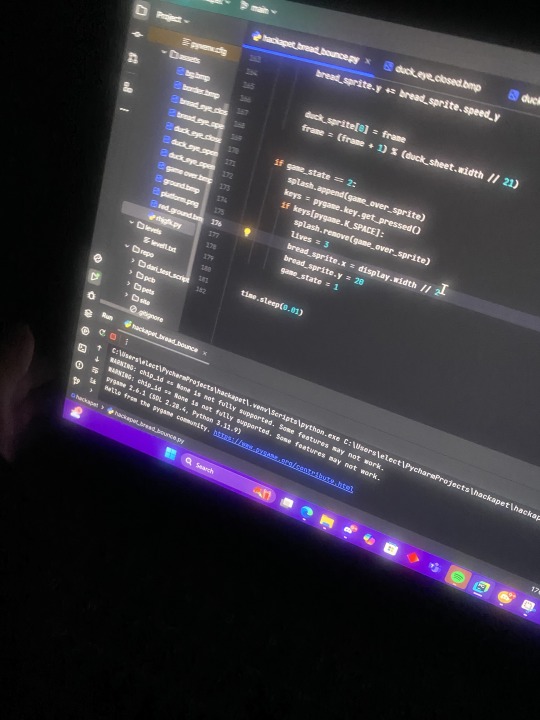
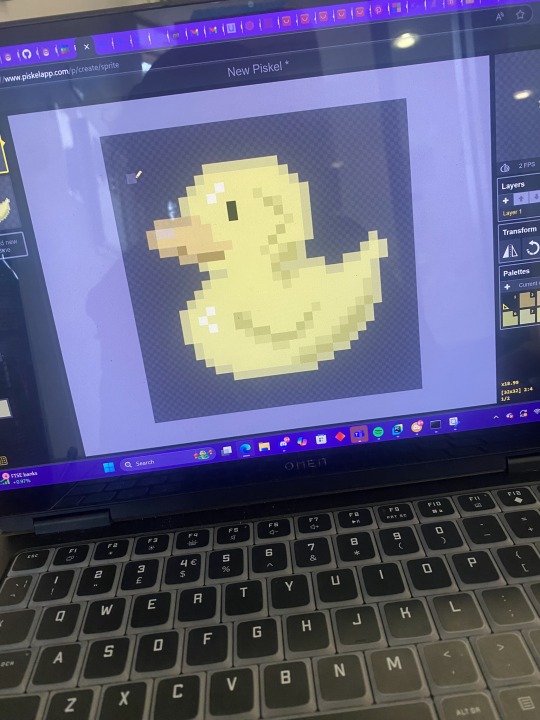
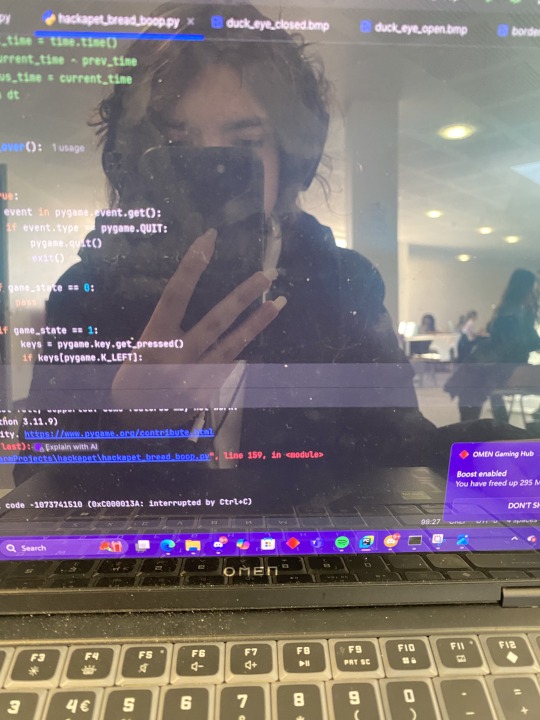
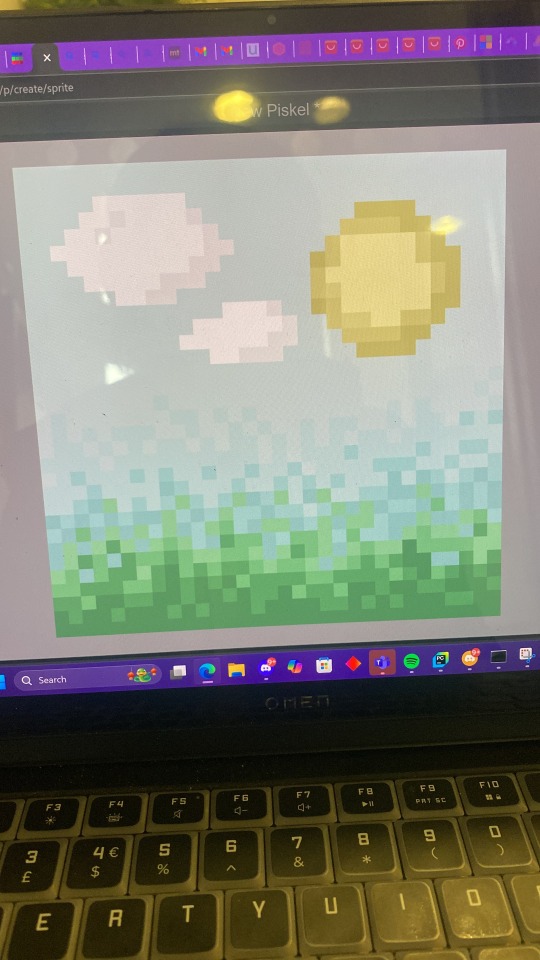
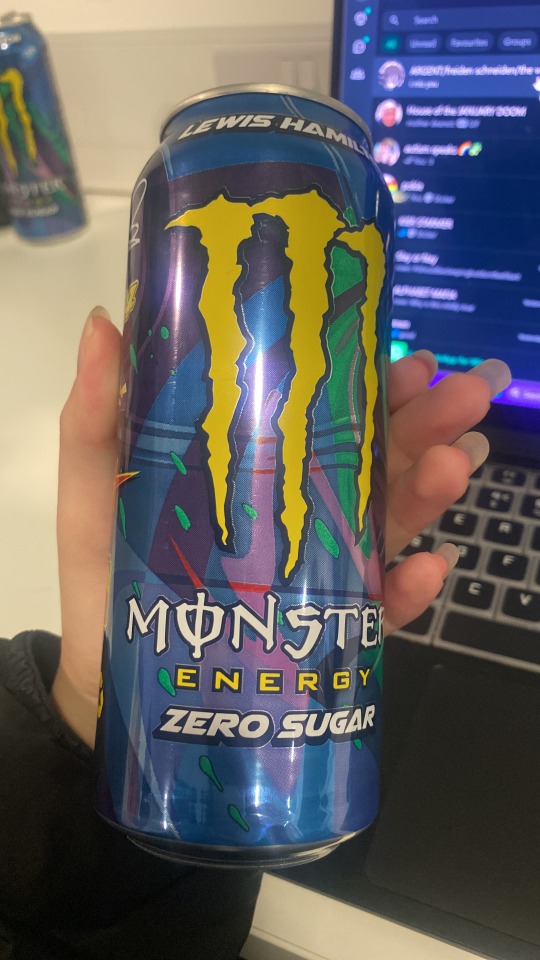
drew all the assets, wrote all the code, consumed all the energy drinks xD
overall an incredibly fun experience!! learning pixel art and ignoring my psychology tests were the biggest highlights :3
now onto the final push to submit on time >:D
#codeblr#programmer#programming#i yearn to code#dev blog#developer#game development#game jam#hack club#pixel art#pixel graphics#duck#python#pygame#code#coding#computer science#cs#csblr
78 notes
·
View notes
Text
hey tumblr! I’m a tiktok refugee looking to meet new people!
- I’m a satanist
- I’m a liberal (I love Bernie sm 😭)
- I love witchcraft/the occult
- I am learning French
- I love computer programming and I’m learning to code in Python
- I am queer (bisexual)
- I am neurodivergent (bpd + adhd)
- I want to be a game dev someday
- billionaire ceos should die
If I sound like someone you’d wanna be friends with, let’s be mutuals!
#tiktok refugee#satanism#liberals#leftist#bernie sanders#luigi mangione#occult#witchcraft#french#learn french#programming#game development#coding#python#wlw#queer#bisexual#bpd#adhd#trauma#neurodivergent#wanna be friends?#looking for mutuals
78 notes
·
View notes
Text
maybe my hate for c++ really is just that I haven't seen my relationship with this language as an actual relationship and more of a "owning a tool to do your job". Maybe I, also, have to give to the language. Maybe it's not all about getting all I want from it, but also letting it express itself, listening to what it says, and giving to it. Maybe I've been a monster to g++. Yes C++ has its rough edges, yes sometimes it doesn't agree with you, yes it has feelings, needs and opinions, and those doesn't always match those of the programmer. Seeing "non trivial constructor" type of error shouldn't make you angry and think "what's that supid language ???!!", but should instead make you realize the language has understanding issues. I'm autistic and I got my quirks, it's a programming language and it has its quirks. They can be beautiful, they can be ugly. It's not its fault, it isn't yours, things aren't always easy. Giving to the language means helping it in these hard times. Take care of your languages, they might not be people, but they still deserve respect.
Except javascript.
#cool retro term#linux#linuxposting#programming#c++#robot girl#c programming#c++ programming#python#odin programming#dev rambles#web development
31 notes
·
View notes
Text
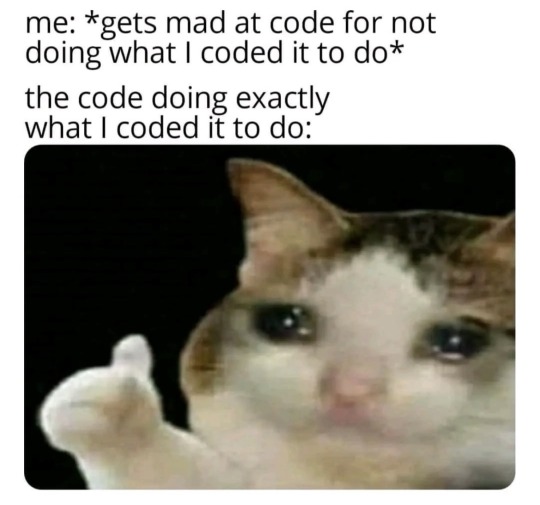
#programmer humor#programming#geek#nerd#programmer#python#laptop#c#meme#pc#dev#developer#full stack#fswd#software development#software engineer#software#hardware#coding#code#javascript#html#css#web development#programming meme#computer science#cs#website#apps#programs
484 notes
·
View notes
Text
hello world.
i am 371 lines of python script
i randomly generate tumblr posts
i have 31100 possible original posts
open for suggestions for new words, please submit in ask box
new posts WHENEVER I FEEL LIKE IT
#programmer#programming#coding#codeblr#software engineering#python#developer#progblr#gimmick blog#gimmick account#random number generation#rng#stockholm#sweden#dice
326 notes
·
View notes
Text
youtube
Spwatch: The Tower almost [[DESTROYED ⚷]] my past and [[CURSED ⚷]] my future. Love kept me [[WHOLE ⚷]] and always moving [[FORWARD AND ONWARDS ⚷]]...
New video is out! A little glimpse about Spam's fate before heading to live with Sears ☺ Everything looks a little placeholderish but I'm learning as I go 🔨 It took a big amount of blood and tears to make, but I shall persevere til the end of times 😭
Support me by watching it on my YouTube channel, drop a like there and subscribe 😘
(I used my music at the outro of the video 😊)
If you have any questions, feel free to ask!
#deltarune au#delta-gambit#[dg!spam]#[dg!sears]#spamblue#spamblue goes brrrrrr#Addison OC#Blue Addison#addispam#spamton#Python#visual novel#visual novel development#[[LIKE AND SUBSCRIBE FOR MORE]]#[dg!shorts]#deltarune addisons
22 notes
·
View notes
Text
Why and How to Hire a Python Programmer: The Key to Success
In the ever-evolving landscape of software development, having the right expertise on your team can be the key to unlocking extraordinary results. If you're looking to breathe life into your digital projects through Python programming, you've come to the right place. This blog post is your comprehensive guide to understanding the importance of hiring a Python programmer and how to find the perfect fit for your next venture.
The Power of Hiring a Python Programmer
Python, celebrated for its versatility and simplicity, has grown into a powerhouse programming language that drives innovation across various domains. Hiring a skilled Python programmer can bring a multitude of benefits to your projects:
Expertise: A dedicated Python programmer possesses in-depth knowledge of the language, its libraries, and best practices.
Efficiency: Python programmers can optimize your code for performance, resulting in faster execution and reduced resource consumption.
Innovative Solutions: Their familiarity with Python's extensive libraries and frameworks enables them to create innovative and customized solutions.
Problem Solving: Python programmers excel at breaking down complex challenges into manageable components and crafting effective solutions.
Quality Assurance: With a Python programmer at the helm, you can expect code that adheres to industry standards and is thoroughly tested.
How to Hire a Python Programmer: Step by Step
Define Your Project: Clearly outline your project's objectives, scope, and technical requirements.
Search Platforms: Utilize online platforms such as freelancing websites, job boards, and programming communities to find potential candidates.
Screen Resumes: Shortlist candidates whose resumes reflect relevant experience and skills in Python programming.
Technical Interviews: Conduct technical interviews to assess their proficiency in Python, problem-solving skills, and coding practices.
Portfolio Evaluation: Review their past projects to gauge the quality of their work and their ability to deliver on your requirements.
Test Projects: Assign a small coding task to evaluate their coding style, adherence to guidelines, and overall approach.
Communication Skills: Assess their communication skills, as effective collaboration is vital for project success.
References and Background Checks: Reach out to references provided to verify their work history and reputation.
Benefits of Hiring a Python Programmer
Customized Solutions: A Python programmer tailors solutions to your project's specific requirements, ensuring a perfect fit.
Time Efficiency: Professionals can expedite development, ensuring your project reaches completion faster.
Quality Assurance: Python programmers follow best practices, resulting in high-quality, maintainable, and bug-free code.
Resource Savings: Outsourcing coding tasks allows you to allocate resources to other business-critical activities.
Flexibility: You can choose to hire a Python programmer on a freelance, contract, or full-time basis, based on your project needs.
Finding the Perfect Python Programmer for Hire
Freelance Platforms: Explore platforms like Upwork and Freelancer for a wide array of freelance Python programmers.
Job Boards: Platforms like LinkedIn and Glassdoor showcase job listings from skilled Python programmers seeking opportunities.
Coding Communities: Engage with online coding communities, forums, and social media groups to discover potential candidates.
Referrals: Tap into your professional network for recommendations on reliable Python programmers.
Tech Conferences and Meetups: Attend industry events to network with potential candidates and evaluate their skills.
Conclusion:
Hiring a Python programmer can transform your software projects into exceptional successes. By recognizing the advantages they bring, diligently following the hiring process, and leveraging various platforms to find the ideal match, you're paving the way for innovation, efficiency, and top-quality results. As you embark on this journey to enhance your programming endeavors, remember that partnering with a skilled Python programmer is an investment that can lead to remarkable outcomes and propel your projects to new heights.
#python developer#python coders#python programmer for hire#hire a python programmer#hiring python programmers#Python full stack developer#hire python developers#developer of python#python coders for hire#hire python coder#python developers for hire#find python developers#best python programmers
0 notes
Text
just cause I was thinking of it earlier, if Snake and Otacon swapped places role wise, David's codename would be Python. idk about Hal's, I can't think of a witty enough pun
15 notes
·
View notes
Text

Welcome back, coding enthusiasts! Today we'll talk about Git & Github , the must-know duo for any modern developer. Whether you're just starting out or need a refresher, this guide will walk you through everything from setup to intermediate-level use. Let’s jump in!
What is Git?
Git is a version control system. It helps you as a developer:
Track changes in your codebase, so if anything breaks, you can go back to a previous version. (Trust me, this happens more often than you’d think!)
Collaborate with others : whether you're working on a team project or contributing to an open-source repo, Git helps manage multiple versions of a project.
In short, Git allows you to work smarter, not harder. Developers who aren't familiar with the basics of Git? Let’s just say they’re missing a key tool in their toolkit.
What is Github ?
GitHub is a web-based platform that uses Git for version control and collaboration. It provides an interface to manage your repositories, track bugs, request new features, and much more. Think of it as a place where your Git repositories live, and where real teamwork happens. You can collaborate, share your code, and contribute to other projects, all while keeping everything well-organized.
Git & Github : not the same thing !
Git is the tool you use to create repositories and manage code on your local machine while GitHub is the platform where you host those repositories and collaborate with others. You can also host Git repositories on other platforms like GitLab and BitBucket, but GitHub is the most popular.
Installing Git (Windows, Linux, and macOS Users)
You can go ahead and download Git for your platform from (git-scm.com)
Using Git
You can use Git either through the command line (Terminal) or through a GUI. However, as a developer, it’s highly recommended to learn the terminal approach. Why? Because it’s more efficient, and understanding the commands will give you a better grasp of how Git works under the hood.
GitWorkflow
Git operates in several key areas:
Working directory (on your local machine)
Staging area (where changes are prepared to be committed)
Local repository (stored in the hidden .git directory in your project)
Remote repository (the version of the project stored on GitHub or other hosting platforms)
Let’s look at the basic commands that move code between these areas:
git init: Initializes a Git repository in your project directory, creating the .git folder.
git add: Adds your files to the staging area, where they’re prepared for committing.
git commit: Commits your staged files to your local repository.
git log: Shows the history of commits.
git push: Pushes your changes to the remote repository (like GitHub).
git pull: Pulls changes from the remote repository into your working directory.
git clone: Clones a remote repository to your local machine, maintaining the connection to the remote repo.
Branching and merging
When working in a team, it’s important to never mess up the main branch (often called master or main). This is the core of your project, and it's essential to keep it stable.
To do this, we branch out for new features or bug fixes. This way, you can make changes without affecting the main project until you’re ready to merge. Only merge your work back into the main branch once you're confident that it’s ready to go.
Getting Started: From Installation to Intermediate
Now, let’s go step-by-step through the process of using Git and GitHub from installation to pushing your first project.
Configuring Git
After installing Git, you’ll need to tell Git your name and email. This helps Git keep track of who made each change. To do this, run:

Master vs. Main Branch
By default, Git used to name the default branch master, but GitHub switched it to main for inclusivity reasons. To avoid confusion, check your default branch:

Pushing Changes to GitHub
Let’s go through an example of pushing your changes to GitHub.
First, initialize Git in your project directory:

Then to get the ‘untracked files’ , the files that we haven’t added yet to our staging area , we run the command

Now that you’ve guessed it we’re gonna run the git add command , you can add your files individually by running git add name or all at once like I did here

And finally it's time to commit our file to the local repository

Now, create a new repository on GitHub (it’s easy , just follow these instructions along with me)
Assuming you already created your github account you’ll go to this link and change username by your actual username : https://github.com/username?tab=repositories , then follow these instructions :


You can add a name and choose wether you repo can be public or private for now and forget about everything else for now.

Once your repository created on github , you’ll get this :

As you might’ve noticed, we’ve already run all these commands , all what’s left for us to do is to push our files from our local repository to our remote repository , so let’s go ahead and do that

And just like this we have successfully pushed our files to the remote repository
Here, you can see the default branch main, the total number of branches, your latest commit message along with how long ago it was made, and the number of commits you've made on that branch.

Now what is a Readme file ?
A README file is a markdown file where you can add any relevant information about your code or the specific functionality in a particular branch—since each branch can have its own README.
It also serves as a guide for anyone who clones your repository, showing them exactly how to use it.
You can add a README from this button:

Or, you can create it using a command and push it manually:

But for the sake of demonstrating how to pull content from a remote repository, we’re going with the first option:

Once that’s done, it gets added to the repository just like any other file—with a commit message and timestamp.
However, the README file isn’t on my local machine yet, so I’ll run the git pull command:

Now everything is up to date. And this is just the tiniest example of how you can pull content from your remote repository.
What is .gitignore file ?
Sometimes, you don’t want to push everything to GitHub—especially sensitive files like environment variables or API keys. These shouldn’t be shared publicly. In fact, GitHub might even send you a warning email if you do:

To avoid this, you should create a .gitignore file, like this:

Any file listed in .gitignore will not be pushed to GitHub. So you’re all set!
Cloning
When you want to copy a GitHub repository to your local machine (aka "clone" it), you have two main options:
Clone using HTTPS: This is the most straightforward method. You just copy the HTTPS link from GitHub and run:

It's simple, doesn’t require extra setup, and works well for most users. But each time you push or pull, GitHub may ask for your username and password (or personal access token if you've enabled 2FA).
But if you wanna clone using ssh , you’ll need to know a bit more about ssh keys , so let’s talk about that.
Clone using SSH (Secure Shell): This method uses SSH keys for authentication. Once set up, it’s more secure and doesn't prompt you for credentials every time. Here's how it works:
So what is an SSH key, actually?
Think of SSH keys as a digital handshake between your computer and GitHub.
Your computer generates a key pair:
A private key (stored safely on your machine)
A public key (shared with GitHub)
When you try to access GitHub via SSH, GitHub checks if the public key you've registered matches the private key on your machine.
If they match, you're in — no password prompts needed.
Steps to set up SSH with GitHub:
Generate your SSH key:

2. Start the SSH agent and add your key:

3. Copy your public key:

Then copy the output to your clipboard.
Add it to your GitHub account:
Go to GitHub → Settings → SSH and GPG keys
Click New SSH key
Paste your public key and save.
5. Now you'll be able to clone using SSH like this:

From now on, any interaction with GitHub over SSH will just work — no password typing, just smooth encrypted magic.
And there you have it ! Until next time — happy coding, and may your merges always be conflict-free! ✨👩💻👨💻
#code#codeblr#css#html#javascript#java development company#python#studyblr#progblr#programming#comp sci#web design#web developers#web development#website design#webdev#website#tech#html css#learn to code#github
93 notes
·
View notes
Text
Day 6 [Forms In HTML]
Introduction To HTML
Day 2 [Multimedia Elements In HTML]
Day 3 [Table in HTML]
Day 4 [Link Tag In HTML]
Day 5 [Lists In HTML]
Forms are basically used for collecting user information. And they are really important to learn. Here's a simple form in HTML:
Code:



Line By Line Explanation:
<form>: Used for creating forms. All the form elements go in this tag. Action: When submitted, data is sent to this file or URL [index.html] Method="post": Sends data
<label> : This describes the input tag for="___": Connects the label to the input with id="name" id : gives a unique identification to the tag <input>: It's used to make the form elements
<input> Type Elements :
type="text" : A simple text box is created.
type="email" : A box to input email.
type="checkbox" : A small square that users can tick. Can select multiple options using this.
type="radio" : A small circle, you can only select one option.
type="submit" : A button that submits the data to the server.
<textarea>: Accepts multiple lines of text. rows="4": It creates 4 lines cols="30": It creates 30 characters
<select> : Creates a drop-down list <option>: Creates an item in the dropdown. value="colorname": This is the data sent to the server if chosen.
Output For The Code:

_______________________
Hope This Helps !!
#code#codeblr#css#html#javascript#python#studyblr#progblr#programming#comp sci#web design#web developers#web development#website design#webdev#website#tech#html css#learn to code#school#study motivation#study aesthetic#study blog#student#high school#studying#study tips#studyspo#website development#coding
34 notes
·
View notes
Text
why does most hashtags about coding here SUCK?? it's always some bot trying to sell something or a gigantic (probably AI generated) post thats NOT EVEN INFORMATIVE about anything (usually also AI related)
if anyone sees this, please tell me some good hashtags/blogs/communities for fun stuff about coding even if it's a personal project or anything like that
13 notes
·
View notes
Text
introduction. hi :)
hello!!
i wanted to document my process of learning to code :) it's something i've always been interested in, but never got to, because i felt like it would take too much time to become good. well, the time will pass anyways, i need a project to stay sane. i have adhd, so it's somewhat of a developing hyperfixation / special interest for me.
i was using sololearn to learn, before i got paywalled :/ -- now i'm using freecodecamp and will probably also use codeacademy. on freecodecamp, i'm doing the certified full stack developer program which will (from my understanding) teach me to code front-end / client side as well back-end. i knew some HTML to begin with, but so far i've finished the basics of HTML mini-course and am on to structural HTML. After the full HTML topic, the course teaches me CSS, Java, Back-End Javascript and Python.
LONG STORY SHORT!! let's be friends, because i love doing this. also i need help. and advice. so much of it. m




#codeblr#studyblr#programming#coding#web development#web developing#progblr#backend development#frontend#frontenddevelopment#html#html css#java#javascript#python#fullstackdevelopment#computer science#stem#stemblr#introduction#looking for moots#mutuals#looking for mutuals
10 notes
·
View notes